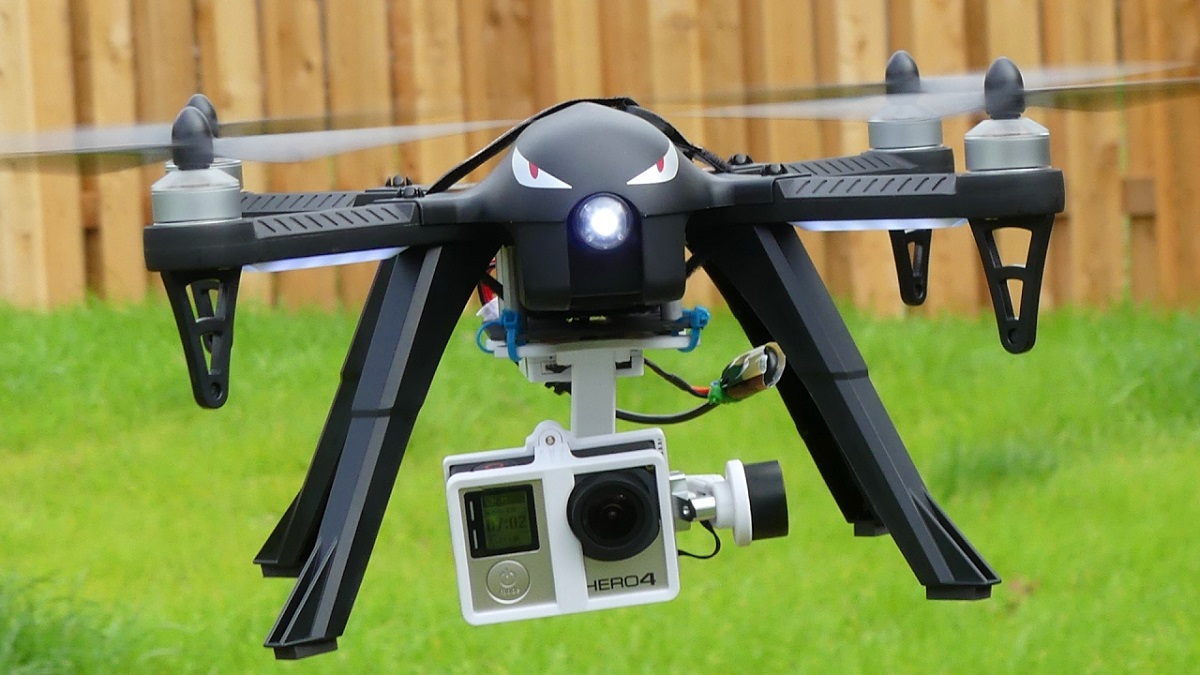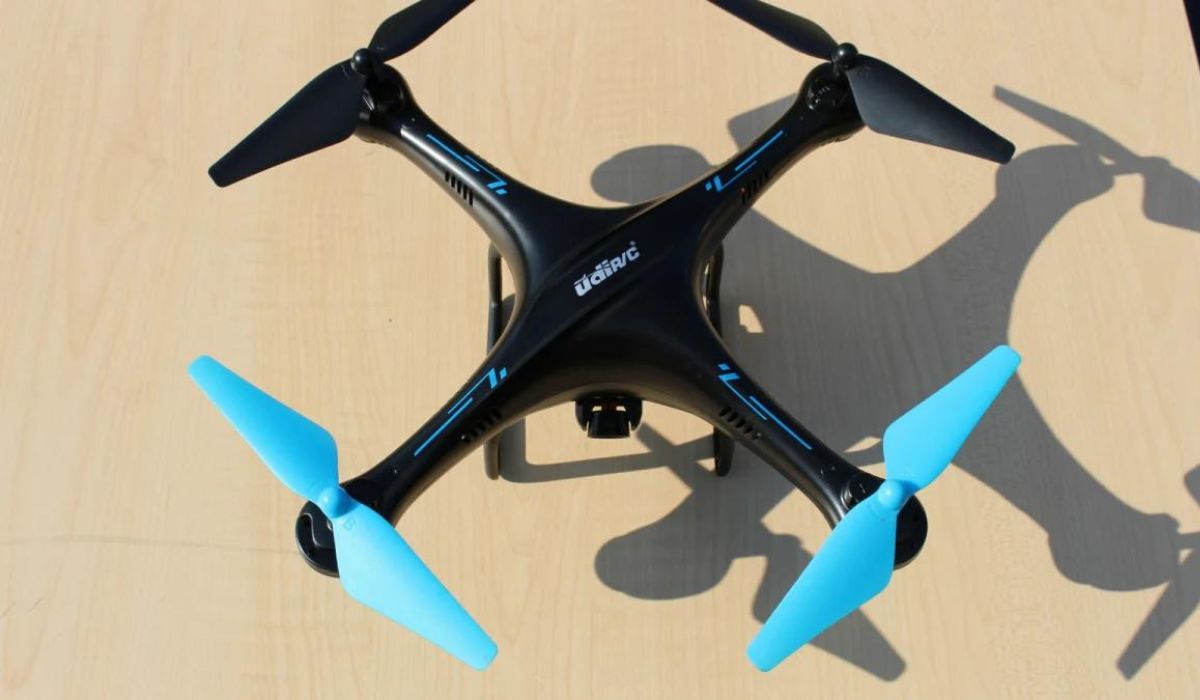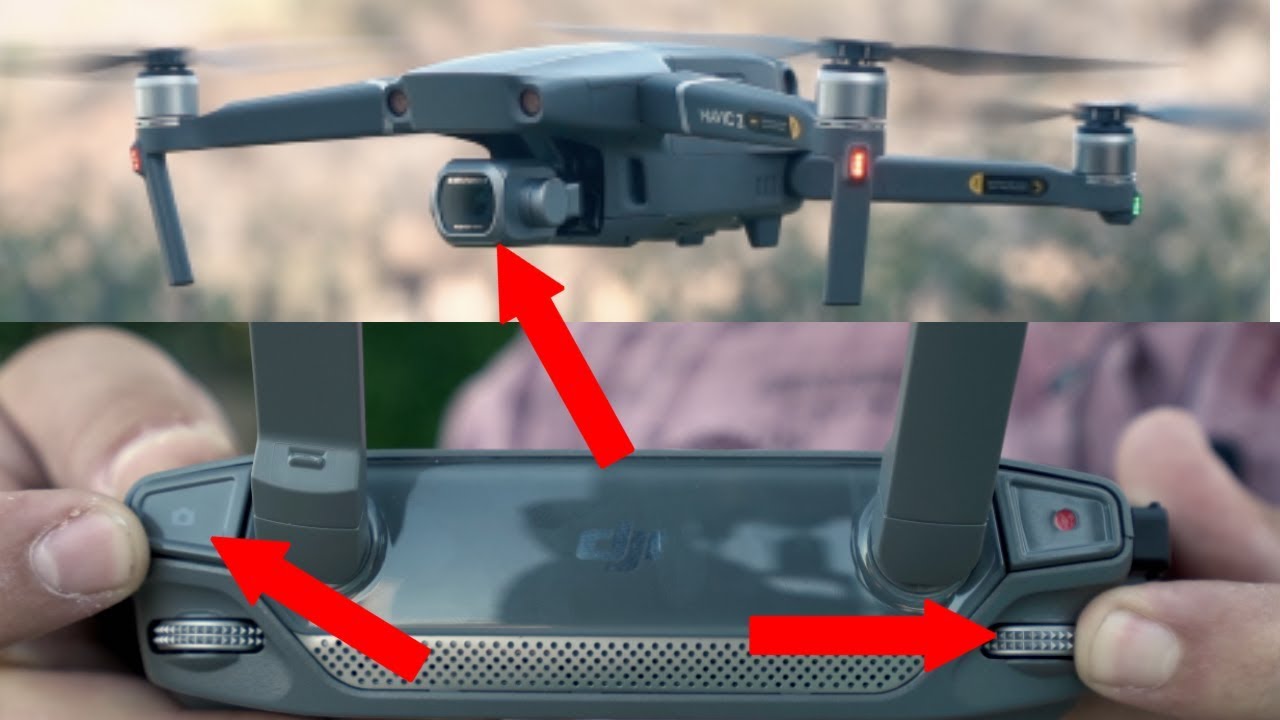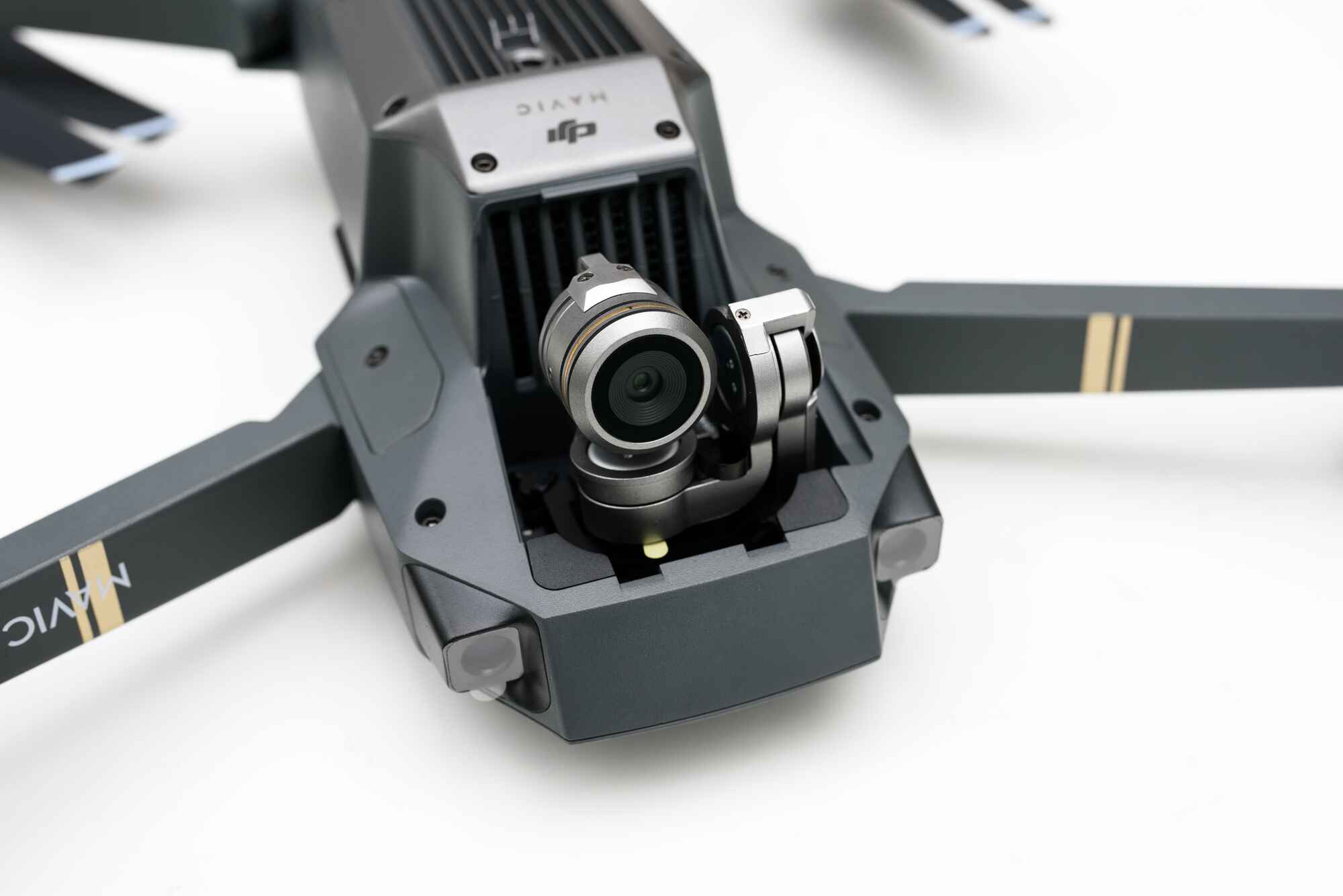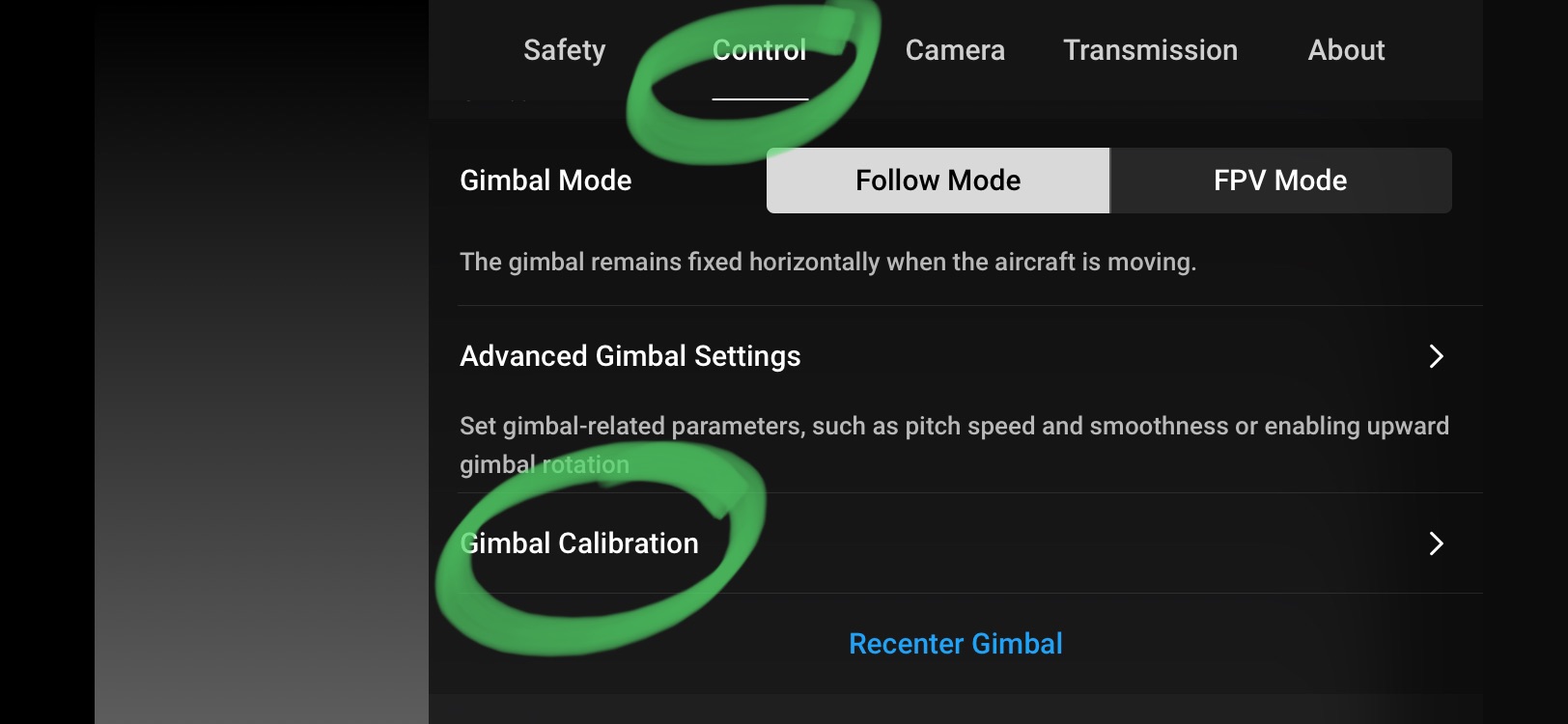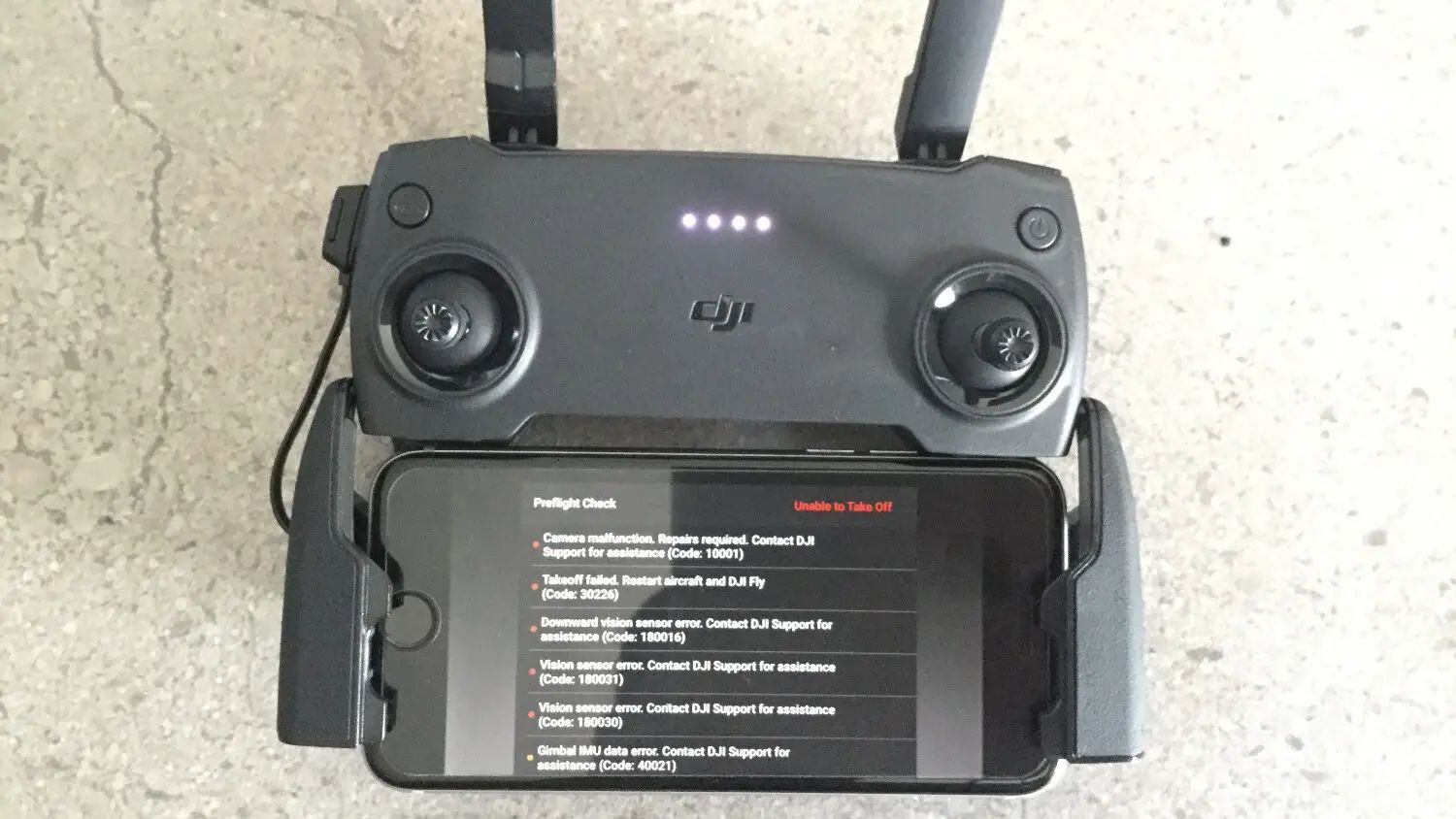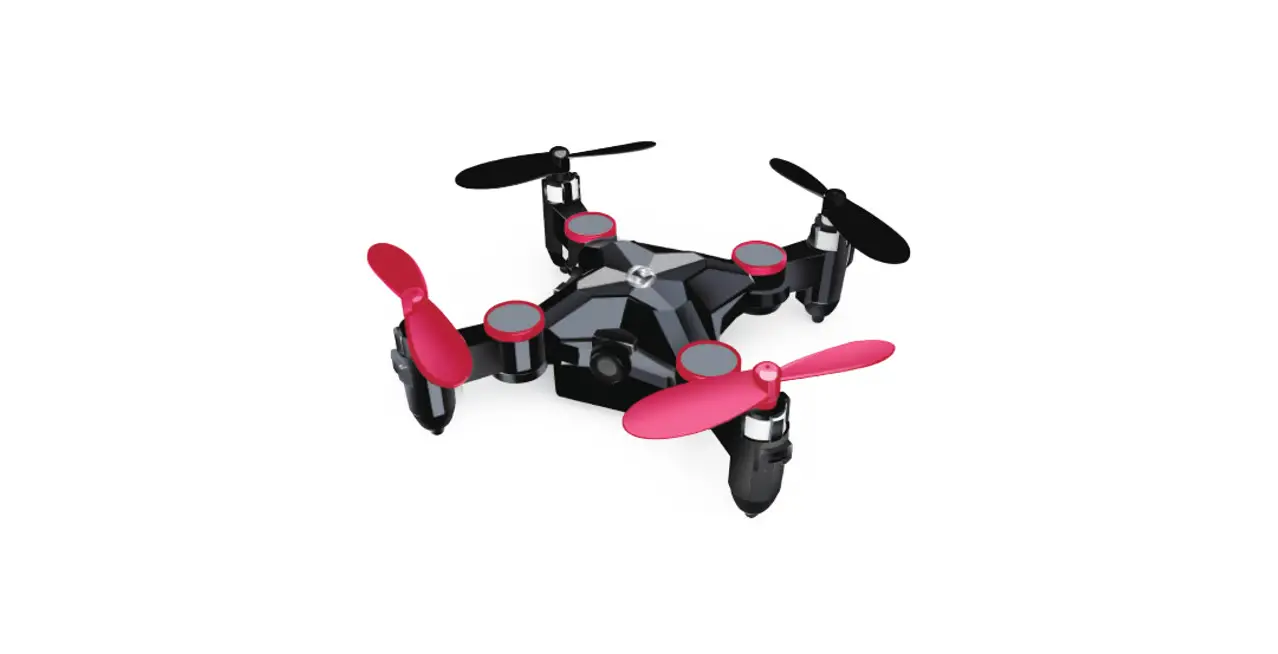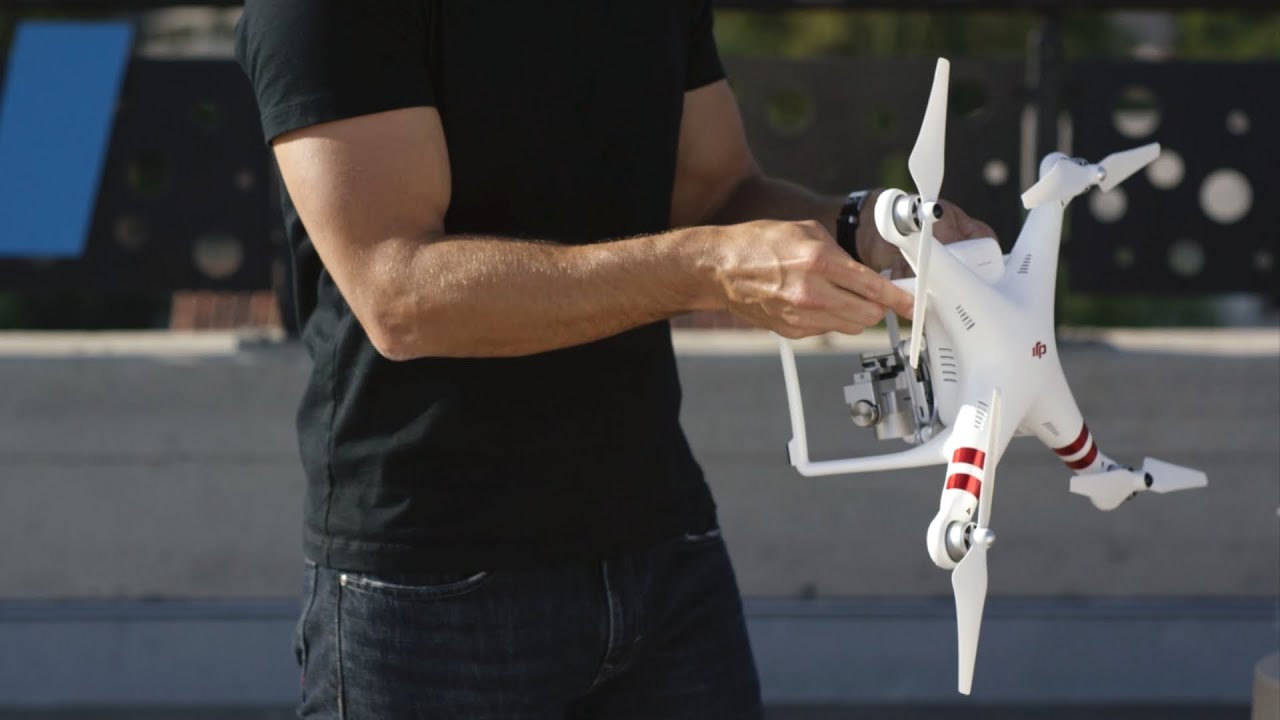Introduction
A gimbal is a crucial component of a drone that plays a significant role in stabilizing and controlling the camera. It allows for smooth and steady footage by counteracting any unwanted movements or vibrations caused by the drone’s motion. With the advancement of drone technology, gimbals have become an essential tool for professional videographers, photographers, and drone enthusiasts.
In this article, we will explore the importance of gimbals in drones and how they work. We will also discuss the different types of gimbals available, their pros and cons, and important factors to consider when choosing a gimbal for your drone. Additionally, we will provide some useful tips on how to use a gimbal effectively to capture stunning aerial shots.
Understanding the role and functionality of a gimbal is vital for drone users who want to achieve high-quality cinematic footage or capture professional-grade photographs. So, let’s delve into the world of gimbals and discover why they are a game-changer for drone photography and videography.
What is a Gimbal?
A gimbal is a mechanical device that allows a camera or other attached equipment to remain steady and level even when the supporting platform, such as a drone, is in motion. It consists of two or three pivoted rings that provide rotational movement along different axes. These rings are typically equipped with motors and sensors to detect and counteract any unwanted motion, ensuring that the camera remains stable.
Gimbals are commonly used in drones to stabilize the camera and eliminate shaky footage, resulting in smooth and professional-looking videos and photos. They are designed to compensate for the drone’s movements, such as pitch, roll, and yaw, caused by factors like wind, turbulence, or aggressive maneuvers.
The primary function of a gimbal is to maintain the camera’s orientation and keep it level, regardless of the drone’s motion. It achieves this by rapidly adjusting the camera’s position in real-time, using the sensor data to counteract any movement. This stabilization allows for capturing clear, sharp, and blur-free footage, even in challenging flying conditions.
Gimbals are not limited to drone photography; they are widely used in various industries, such as filmmaking, sports broadcasting, and surveillance. They are also used in handheld camera stabilizers, known as gimbals or stabilizer rigs, which provide smooth shots while walking or running.
Overall, a gimbal is a crucial technology that revolutionizes the way we capture dynamic footage. By ensuring stable camera positioning, it enables photographers and videographers to unleash their creativity and capture incredible aerial shots or smooth handheld footage.
Importance of a Gimbal in Drone
The importance of a gimbal in a drone cannot be overstated. It is the key component that ensures stable and smooth footage, making it an invaluable tool for drone photography and videography. Here are some reasons why a gimbal is essential:
- Stability: One of the primary functions of a gimbal is to stabilize the camera attached to the drone. It counters any unwanted movements caused by the drone’s flight, ensuring that the camera remains level and steady. This stability is crucial for capturing high-quality footage without any shaking or vibrations.
- Professional-Looking Footage: A gimbal allows drone photographers and videographers to achieve professional-grade results. By eliminating the effects of the drone’s movements, such as tilt or roll, it ensures that the footage is smooth, clear, and visually appealing. This is especially important for cinematic shots and aerial photography.
- Enhanced Creativity: With a gimbal, operators have more freedom to experiment and capture unique angles and perspectives. It allows for seamless camera movement, such as panning and tracking shots, which enhance the overall storytelling and visual impact of the footage.
- Improved Image Quality: By reducing shakes and vibrations, a gimbal helps to capture sharper and more detailed images. It minimizes motion blur and enhances the overall image quality, allowing for better results in post-processing and editing.
- Expanded Shooting Possibilities: A gimbal opens up a wide range of shooting possibilities for drone users. It enables them to capture footage in challenging conditions, such as windy environments or during dynamic maneuvers. Whether it’s a fast-paced action shot or a serene aerial landscape, a gimbal ensures stability and precise camera control.
In summary, a gimbal is a crucial tool for achieving professional-quality footage with a drone. Its stability-enhancing capabilities, the ability to capture smooth shots, and the expanded creative possibilities it offers make it an indispensable component for drone photography and videography.
How does a Gimbal Work?
A gimbal operates on a system of sensors, motors, and algorithms to counteract any unwanted movements and keep the camera steady. Let’s explore how a gimbal works:
1. Sensors: A gimbal consists of various sensors, including accelerometers, gyroscopes, and sometimes magnetometers. These sensors constantly monitor the drone’s movements and provide real-time data to the gimbal system.
2. Motorized Stabilization: Based on the sensor data, the gimbal’s motorized components make rapid adjustments to compensate for the drone’s movements. The motors tilt, pan, and sometimes roll the camera to counteract any vibrations or tilting of the drone.
3. Three-Axis Movement: Most gimbals offer three-axis movement: pitch, roll, and yaw. The pitch axis controls the up and down movement of the camera, the roll axis controls side-to-side tilting, and the yaw axis allows for panning left or right.
4. Control Algorithms: The gimbal’s control algorithm analyzes the sensor data and calculates the precise adjustments needed to stabilize the camera. It takes into account factors such as the drone’s motion, wind conditions, and user input to make accurate and quick corrections.
5. Smooth and Steady Movement: The combination of sensors, motors, and algorithms allows the gimbal to make rapid adjustments, ensuring that the camera stays level and steady. This eliminates any shaking or vibrations, resulting in smooth and stable footage.
Gimbals may have different designs and variations, but the fundamental principle remains the same: to provide stabilization and keep the camera level. Whether it’s a handheld gimbal or a gimbal integrated into a drone, the goal is to achieve smooth and professional-looking footage by counteracting the impact of external forces.
By employing this complex system of sensors and motors, a gimbal enables drone operators to capture stunning aerial shots, record cinematic videos, and take high-quality photographs with ease and precision.
Different Types of Gimbals
Gimbals come in various types and configurations, each designed to cater to different needs and applications. Here are some common types of gimbals:
- 2-Axis Gimbal: A 2-axis gimbal offers stabilization along two axes, usually pitch and roll. This type of gimbal is simpler and lighter, making it suitable for smaller drones or situations where minimal stabilization is required.
- 3-Axis Gimbal: The most common type, a 3-axis gimbal provides stabilization along all three axes: pitch, roll, and yaw. This allows for precise and comprehensive stabilization and is ideal for capturing smooth and steady footage in various flight conditions.
- Brushless Gimbal: Brushless gimbals use brushless motors, which offer improved performance and durability compared to brushed motors. These gimbals are known for their smooth operation and precise control, making them popular among professional drone photographers and videographers.
- Inverted Gimbal: An inverted gimbal is designed with the camera positioned below the gimbal’s main body. This configuration allows for unobstructed views and enables the camera to capture shots without any visible parts of the gimbal in the frame.
- Handheld Gimbal/Stabilizer: Handheld gimbals, also known as camera stabilizers or gimbals rigs, are designed to be used by videographers on the ground. They offer stabilization for handheld cameras, allowing for smooth and steady footage while walking or moving.
- Embedded Gimbal: Some drones come with an embedded gimbal, which means the gimbal is integrated into the drone’s design. These gimbals are specifically built for a particular drone model, ensuring optimal performance and compatibility.
It’s important to consider the type of gimbal that best suits your specific needs. Factors such as the type of drone, the weight and size of the camera, and the intended application should be taken into account when choosing a gimbal.
Every type of gimbal has its advantages and limitations, so it’s essential to assess your requirements and preferences to ensure you make the right choice. Whether it’s a 2-axis gimbal for casual aerial photography or a high-performance 3-axis gimbal for professional cinematography, choosing the right type will significantly impact the quality of your footage.
Pros and Cons of Using a Gimbal in Drone
A gimbal is a valuable tool for drone photographers and videographers, but it’s essential to consider both the advantages and disadvantages before incorporating it into your setup. Here are some pros and cons of using a gimbal in a drone:
Pros:
- Stability: The primary advantage of using a gimbal is the stabilization it provides. It helps eliminate unwanted camera movements and vibrations caused by the drone’s flight, resulting in smooth and steady footage.
- Professional-Quality Footage: A gimbal enables users to capture professional-grade footage with a drone. The stability it offers ensures that the footage is clear, sharp, and visually appealing, elevating the overall production value.
- Creative Freedom: With a gimbal, operators have more flexibility and creative freedom to experiment with angles and perspectives. It allows for seamless camera movements, such as pans, tilts, and tracking shots, enhancing the storytelling and visual impact of the footage.
- Improved Image Quality: By reducing shakes and vibrations, a gimbal helps capture sharper and more detailed images. It minimizes motion blur and enhances overall image quality, making post-processing and editing a smoother process.
- Expanded Shooting Possibilities: With a gimbal, drone users can capture footage in challenging conditions such as strong winds or during dynamic maneuvers. It allows for stability and precise camera control, opening up a wide range of shooting possibilities.
Cons:
- Added Weight and Cost: Gimbals can add weight to your drone setup, which may impact flight performance and battery life. Additionally, gimbals can be expensive, especially high-quality ones offering advanced stabilization features.
- Learning Curve: Mastering the use of a gimbal requires practice and familiarity with its controls. Achieving smooth and professional-looking footage may take time and patience to develop the necessary skills.
- Compatibility and Integrations: Not all drones are compatible with gimbals, and some gimbals are specifically designed for certain drone models. It’s important to ensure compatibility and invest in gimbals that seamlessly integrate with your drone.
- Drone Limitations: Gimbals can enhance footage stabilization, but they cannot compensate for all limitations of drone technology. Factors such as wind, flight turbulence, and quick maneuvers may still impact the overall stability of your footage to some extent.
Considering the pros and cons of using a gimbal in a drone setup will help you make an informed decision. While gimbals offer significant advantages in terms of stability, image quality, and creative possibilities, they also come with certain limitations that need to be weighed against the intended use and specific requirements of your drone photography or videography.
Factors to Consider When Choosing a Gimbal
Choosing the right gimbal for your drone setup is crucial to achieving optimal stabilization and capturing professional-grade footage. Here are some factors to consider when selecting a gimbal:
1. Drone Compatibility: Ensure that the gimbal you choose is compatible with your specific drone model. Different drones have varying mounting mechanisms and communication protocols, so it’s essential to select a gimbal that seamlessly integrates with your drone.
2. Payload Capacity: Consider the weight and size of the camera or accessory you plan to attach to the gimbal. Make sure the gimbal’s payload capacity can handle the weight of your equipment to ensure stability and safe operation.
3. Stabilization Technology: Look for gimbals that utilize advanced stabilization technologies, such as brushless motors and precise control algorithms. These technologies provide smoother operation and more accurate stabilization, resulting in higher-quality footage.
4. Number of Axes: Determine whether you need a 2-axis or 3-axis gimbal. While a 2-axis gimbal can provide basic stabilization, a 3-axis gimbal offers more comprehensive stabilization along all three axes, ensuring better camera control and smoother footage.
5. Build Quality and Durability: Opt for gimbals made from high-quality materials that can withstand the rigors of drone operation. Sturdy construction and durable components contribute to longevity and reliability, especially in demanding environments.
6. User Experience and Controls: Consider the ease of use and intuitiveness of the gimbal’s controls. Look for gimbals with user-friendly interfaces and adjustable settings that allow you to fine-tune the stabilization according to your preferences and shooting situations.
7. Battery Life: Check the battery life of the gimbal, as longer battery life ensures extended operation without frequent recharging. It’s also worth considering gimbals that offer the option of removable or rechargeable batteries for added convenience.
8. Additional Features: Explore additional features or functionalities offered by the gimbal, such as follow mode, time-lapse mode, or wireless connectivity. These extra features can enhance your creative capabilities and provide more versatility in your drone photography or videography.
9. Price: Set a budget for your gimbal, considering the balance between quality and affordability. While it’s important to invest in a reliable and high-performance gimbal, it’s also necessary to find one that fits within your budget constraints.
By carefully considering these factors, you can choose a gimbal that best suits your drone setup, allowing you to achieve stable and professional-looking footage for your creative projects.
Tips for Using a Gimbal in Drone
Using a gimbal effectively is essential for capturing smooth and stable footage with your drone. Here are some tips to help you make the most out of your gimbal:
1. Calibrate Your Gimbal: Before every flight, make sure to calibrate your gimbal. This ensures that the sensors and motors are properly synchronized, optimizing the stabilization performance.
2. Practice Smooth Movements: To achieve the best results, practice smooth movements with your drone. Avoid jerky and sudden movements that can affect the gimbal’s stabilization. Gradual and controlled movements will result in smoother footage.
3. Use the Follow Mode Correctly: If your gimbal has a follow mode, understand how it works and utilize it effectively for tracking subjects or creating dynamic shots. However, be mindful of potential obstacles and safety considerations while using this mode.
4. Adjust Gimbal Settings: Familiarize yourself with the gimbal’s settings and adjust them according to your shooting needs. The tilt, roll, and pan speed, as well as the follow sensitivity, can be adjusted to match different shooting scenarios and creative preferences.
5. Utilize Pre-programmed Modes: Some gimbals offer pre-programmed modes such as time-lapse or panoramic mode. Explore these modes to add creative flair to your footage and capture breathtaking shots.
6. Monitor Battery Levels: Keep an eye on the gimbal’s battery levels, especially during longer shoots. Running out of power during a flight can disrupt the stabilization and potentially lead to unstable footage. Be sure to have spare batteries on hand.
7. Avoid Strong Winds: Strong winds can affect the stability of your drone and gimbal. Fly in calm weather conditions to minimize potential disturbances and ensure smoother footage.
8. Properly Balance the Camera: When attaching your camera to the gimbal, make sure it is properly balanced. Balancing ensures that the gimbal can efficiently stabilize the camera’s weight and minimize any unnecessary movements or vibration.
9. Plan Your Shots: Before taking off, have a clear plan for the shots you want to capture. This will help you navigate the drone smoothly and make deliberate movements, resulting in more visually appealing footage.
10. Practice and Experiment: Finally, practice regularly and experiment with different techniques and movements. Each flight will enhance your skills and understanding of how to maximize the gimbal’s capabilities for smooth and professional results.
By following these tips and honing your gimbal skills, you can capture stunning and stable footage that showcases the full potential of your drone and gimbal setup.
Conclusion
Gimbals are a game-changer in the world of drone photography and videography. Their ability to stabilize the camera and eliminate unwanted movements has revolutionized the quality of aerial footage. By counteracting the drone’s motion and providing smooth and steady shots, gimbals enhance the overall professionalism and visual impact of the footage.
Understanding the importance of gimbals in drones and how they work is crucial for anyone who wants to capture high-quality aerial shots or cinematic videos. The different types of gimbals available, such as 2-axis and 3-axis gimbals, offer varying levels of stabilization and control, allowing users to find the best fit for their specific needs.
When choosing a gimbal for your drone, it’s important to consider factors such as compatibility, payload capacity, build quality, and additional features. These considerations will ensure that you select a gimbal that maximizes stability and meets your creative requirements.
While gimbals offer numerous advantages, it’s important to be aware of their limitations. Factors such as added weight, cost, and necessary learning curve should be considered when deciding whether to incorporate a gimbal into your drone setup.
By following the tips for using a gimbal in a drone, such as calibrating the gimbal, practicing smooth movements, and utilizing pre-programmed modes, you can harness the full potential of your gimbal and capture spectacular aerial footage.
In conclusion, gimbals have become an indispensable tool for drone photographers and videographers. They provide stability, enhance creativity, and improve the overall image quality of aerial shots. By carefully considering the factors, practicing proper techniques, and selecting the right gimbal for your drone, you can take your aerial photography and videography to new heights.







